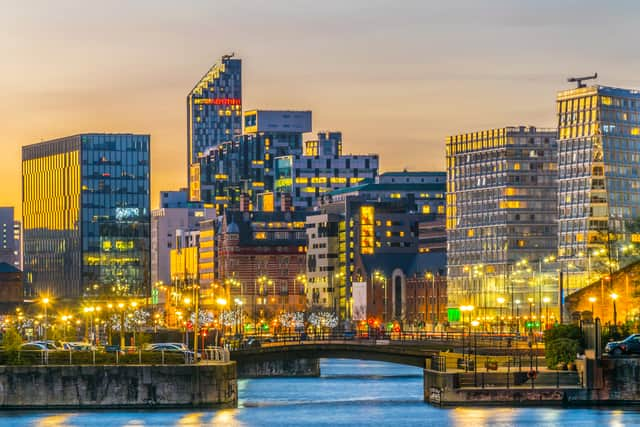Liverpool revealed as one of least ‘green’ urban city centres in Britain
and live on Freeview channel 276
Despite boasting Green Flag Award-winning spaces like English Heritage Grade 1 listed Sefton Park and Grade 2 listed Stanley Park nearby, the city centre ranks in the bottom three across England, Scotland and Wales.
Advertisement
Hide AdAdvertisement
Hide AdScientists from the University of Sheffield analysed the green attributes of 68 city centres based on tree cover, vegetation, and the presence of parks. Glasgow was ranked the least green urban city centre, followed by Leeds, Liverpool, Sheffield and then Middlesbrough.
Exeter was deemed to be the ‘greenest’ urban city centre in Britain, followed by fellow southern cities Islington and Bristol.
The researchers said their findings, published in peer reviewed journal Plos One, "reveal a clear divide between the urban city centres" with the greenest ones located in the south of England, while the lowest scoring ones are ex-industrial cities in the north.
Dr Paul Brindley, senior author of the study from the University of Sheffield’s department of landscape architecture, said: "By 2050 nearly 70% of the world’s population are projected to be living in towns and cities.
Advertisement
Hide AdAdvertisement
Hide Ad"Green spaces have been proven time and again to boost people’s wellbeing and are essential to biodiversity, but nobody has ever looked at how green our city centres are, despite the amount of time individuals spend in them on a daily basis.
"The fact that all five of the greenest city centres are in the South of England, whilst the five city centres with the least green attributes are in the north of Great Britain, clearly highlights the need to urgently improve the greenness of city centres at the bottom of the list, and to ensure that action is taken by local authorities to close the gap."
For the study, the researchers ranked 68 municipalities in Great Britain with populations of at least 100,000.


To determine the presence of vegetation, the researchers used a measure known as the normalised difference vegetation index (NDVI), using satellite observations of light absorption and reflection to measure vegetation cover in a given area. The team also looked at tree cover and presence of green spaces in the city centres.
Advertisement
Hide AdAdvertisement
Hide AdThe researchers pointed out that while Sheffield is renowned as the UK’s greenest city overall - with more trees per person than any city in Europe - its city centre lacks green space due to its industrial heritage.
It’s a similar story for Liverpool: its maritime past means the city is historically based around the docks, storage and trade rather than green spaces.
- Exeter
- Islington
- Bristol
- Bournemouth
- Cambridge
- Glasgow
- Leeds
- Liverpool
- Sheffield
- Middlesborough
Comment Guidelines
National World encourages reader discussion on our stories. User feedback, insights and back-and-forth exchanges add a rich layer of context to reporting. Please review our Community Guidelines before commenting.
